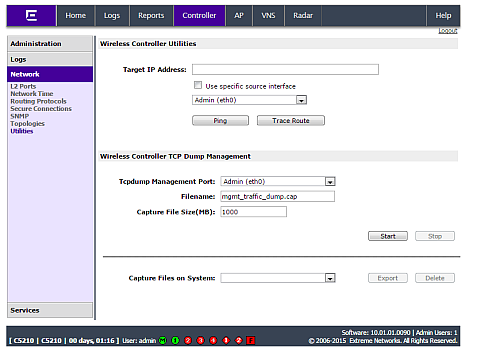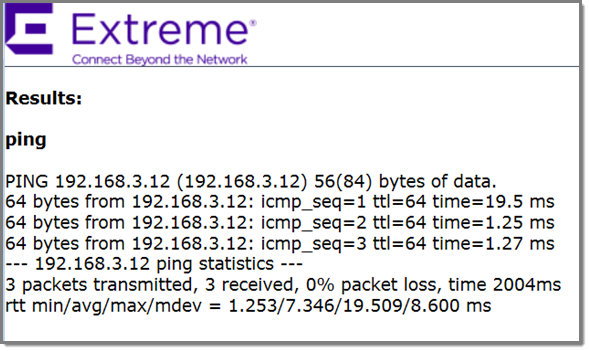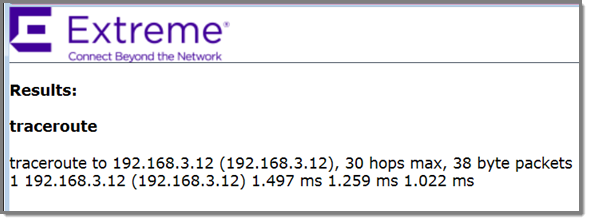You can use wireless controller utilities to test a connection to the target IP address and record the route through the Internet between your computer and the target IP address. In addition, you can also use controller utilities to capture exception traffic, which can be useful for network administrators when debugging network problems.
To test or record IP address connections:


Note
The Target IP address supports both IPv4 and IPv6 addresses.
The following is an example of trace results.

The wireless controller TCP dump management allows you to capture exception traffic that is sent to the management plane. Exception traffic is defined as traffic that is sent to the management plane from the data/control plane for special handling. For example, exception traffic can include DHCP, OSPF, and TFTP traffic.
When capturing exception traffic, you define the following:
The captured traffic file is stored in a binary tcpdump-format file on the controller or flash card. The captured traffic file can then be exported to a local machine for packet analysis and opened with a traffic analysis tool. For example, Wireshark.
The controller can only store one captured traffic file locally. Alternately, if you choose to save the captured traffic file on a flash card, the available space on the flash card will dictate how many captured traffic files you can save.